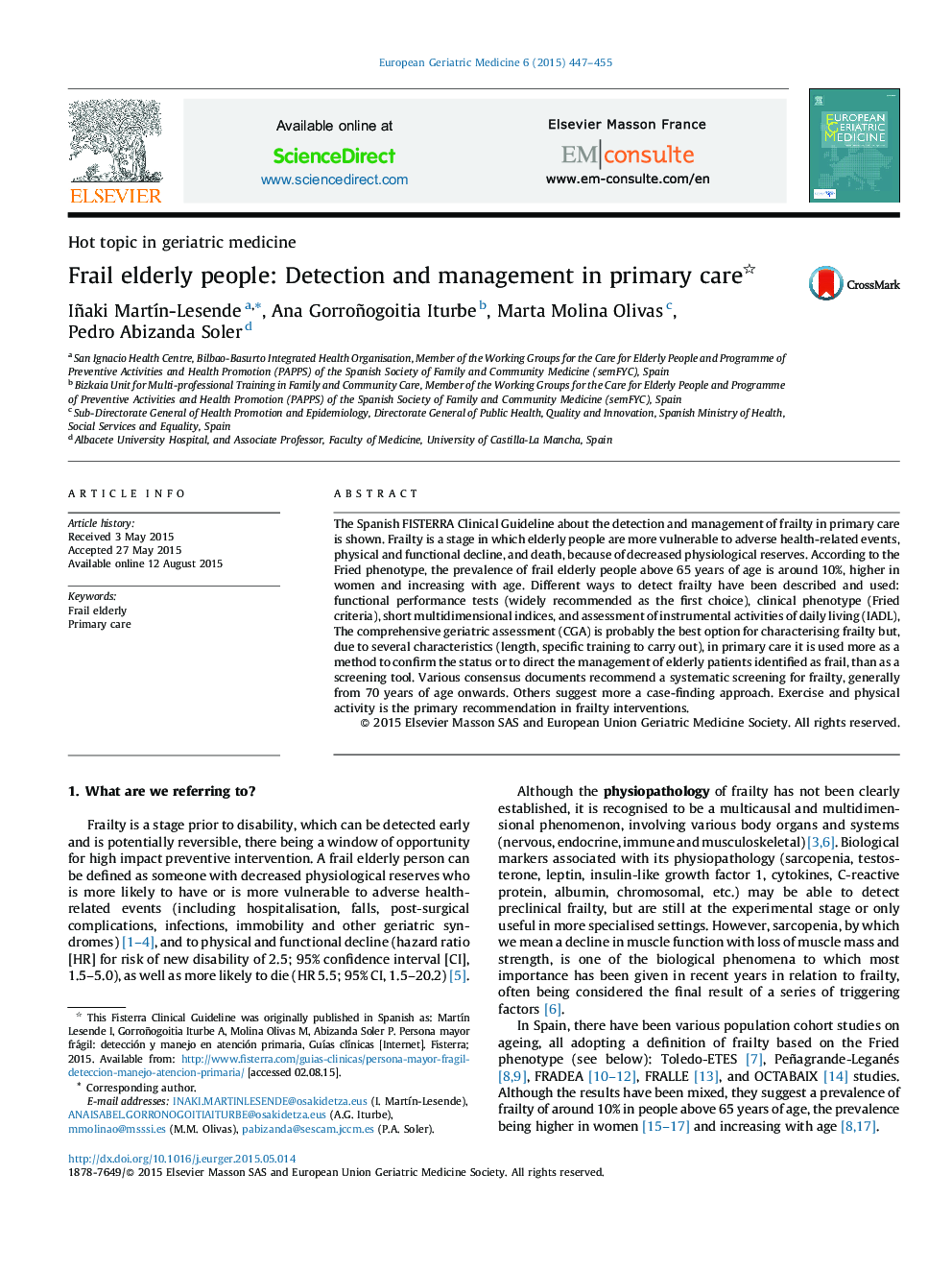| Article ID | Journal | Published Year | Pages | File Type |
|---|---|---|---|---|
| 3323937 | European Geriatric Medicine | 2015 | 9 Pages |
The Spanish FISTERRA Clinical Guideline about the detection and management of frailty in primary care is shown. Frailty is a stage in which elderly people are more vulnerable to adverse health-related events, physical and functional decline, and death, because of decreased physiological reserves. According to the Fried phenotype, the prevalence of frail elderly people above 65 years of age is around 10%, higher in women and increasing with age. Different ways to detect frailty have been described and used: functional performance tests (widely recommended as the first choice), clinical phenotype (Fried criteria), short multidimensional indices, and assessment of instrumental activities of daily living (IADL), The comprehensive geriatric assessment (CGA) is probably the best option for characterising frailty but, due to several characteristics (length, specific training to carry out), in primary care it is used more as a method to confirm the status or to direct the management of elderly patients identified as frail, than as a screening tool. Various consensus documents recommend a systematic screening for frailty, generally from 70 years of age onwards. Others suggest more a case-finding approach. Exercise and physical activity is the primary recommendation in frailty interventions.
